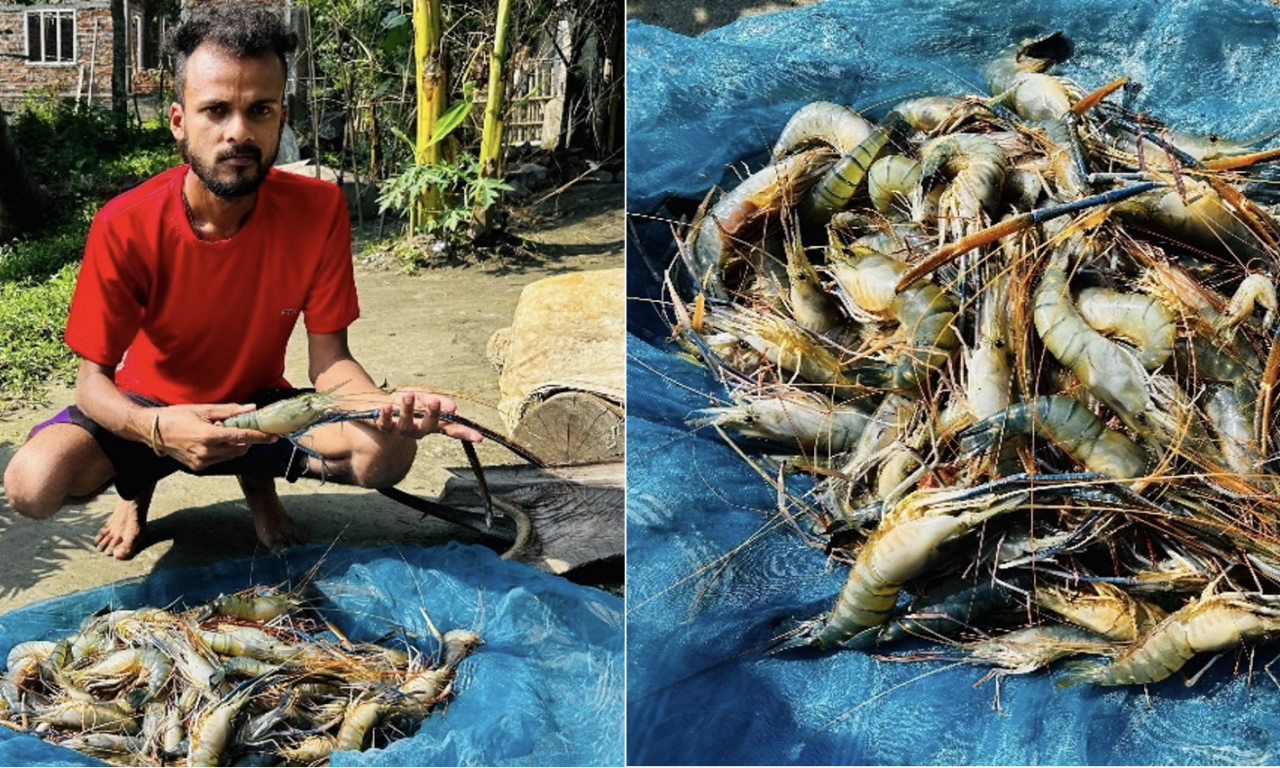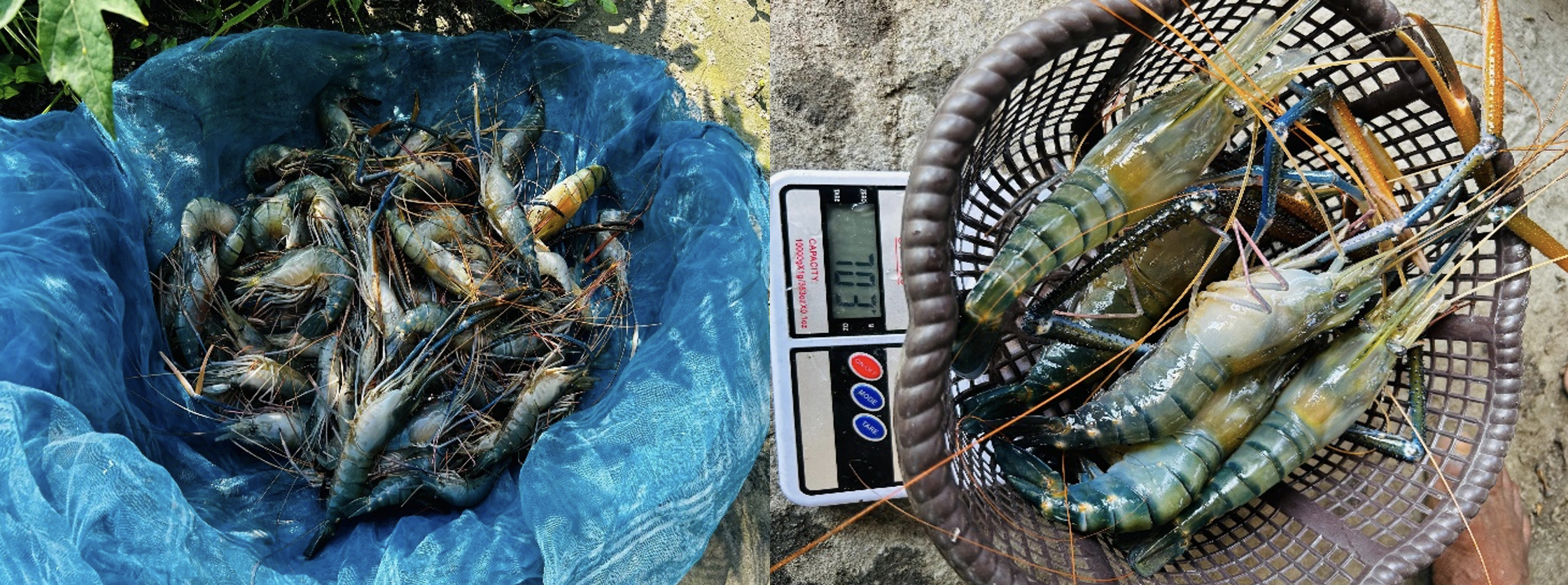
The Fisheries Landscape of Assam
Assam, a state blessed with vast and diversified fishery resources, boasts a total water-spread area over 94 thousand hectares, including rivers, wetlands, reservoirs, swamps, ponds, and tanks. The primary fish species cultured in the state are Rohu, Catla, Mrigal, Grass Carp, Silver Carp, Common Carp, and other improved varieties such as Jayanti Rohu, Improved Catla, and Amur Carp, which accounts for an impressive 440,000 metric tons of fish and over 20 million fish seed production annually. Despite this, Assam is not yet self-reliant in fish and fish seed production mainly because of the agroclimatic conditions (prolonged winter), poor infrastructure, poor hatchery management/expertise and less cognizance on scientific fish farming.
The Advent of Scampi in Assam’s Aquaculture
The introduction of the giant freshwater prawn, popularly known as Scampi, can play a significant role in Assam’s aquaculture. Scampi is the largest and most widely cultured prawn species, globally, due to its high commercial value and preference in taste among consumers. This species is ideal for culturing in both polyculture and monoculture systems, making it a versatile addition to Assam’s fishery sector and an excellent candidate for integration with existing popular carp polyculture systems.
Combining prawns with carp optimizes resource use, including water, feed, and pond space. This integration also diversifies income sources, thereby reducing financial risks for farmers. Prawns and carp occupy different ecological niches and have distinct feeding habits, leading to improved overall pond productivity through better nutrient cycling while reducing environmental impacts.
Integrated Farming for Enhanced Productivity
Combining prawns with carp optimizes resource use, including water, feed, and pond space. This integration also diversifies income sources, thereby reducing financial risks for farmers. Prawns and carp occupy different ecological niches and have distinct feeding habits, leading to improved overall pond productivity through better nutrient cycling while reducing environmental impacts.

Successful Pilot Project and its Economic Benefits
In 2023, WorldFish-India, in collaboration with the Department of Fisheries, Assam, introduced freshwater prawn cum carp polyculture under the WorldBank-funded APART project in five districts, Kamrup, Nalbari, Morigaon, Darrang, and Goalpara. This initiative involved the formation of a ‘Farmer Producer Group (FPG)’ in each selected district.
Each FPGs brought together 12-25 farmer members who operated in a five-hectare water area. The results were remarkable as the farmers gathered an average production of 60 kg of prawns and 500 kg of fish, driven by high market demand and efficient feeding practices which significantly increased the adopted farmers' incomes.
A Bright Future for Assam’s Aquaculture
The integration of freshwater prawn culture with carp polyculture has proven to be a game-changer for Assam. This approach not only enhances aquaculture production but contributes to the economic upliftment of rural communities and promotes sustainable fishery practices. As more farmers and young aquapreneurs recognize the benefits, the high-value crop of scampi promises to transform Assam's aquaculture landscape.
For more information: Tandon AK. (2024). Better management practices for polyculture of carps with freshwater prawns: Version 2 (2024). Penang, Malaysia: WorldFish. Manual: 2024-24.
